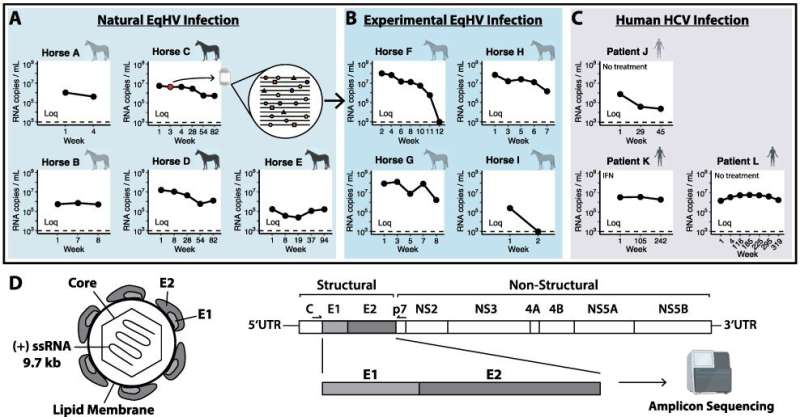Equine hepatitis viruses help us understand human hepatitis C

More than 70 million people worldwide are infected with hepatitis C. The disease is treatable, but it is often not recognized. In 80% of cases, it takes chronic courses and can lead to liver damage and even liver cancer. So far, there is no effective vaccine. "The reason why the disease often doesn't clear up is that the virus is constantly changing and thus escapes the immune system," explains Dr. Daniel Todt from the RUB Virology Department. "The immune system forms antibodies that always lag behind the virus for a while and have the ability to combat a variant that was in the body about two weeks before." This evolution of the virus within the host is therefore of particular interest to the researchers.
To date, there have been no suitable models to deal with these questions in animal experiments. In their quest for a so-called surrogate model for research into the human hepatitis C virus, the scientists analyzed samples from horses that were taken in cooperation with the University of Veterinary Medicine Hannover (TiHo). "If you compare hepatitis viruses that can infect different species, it is striking that the human virus and the virus that is infectious for horses are genetically close relatives," explains André Gömer, Ph.D. student at the TiHo Research Training Group VIPER and lead author of the paper. The researchers analyzed the surface proteins of viruses from humans and horses in the course of infection and compared the results.
A better understanding of the virus' tactics
"In the horse virus, a region that we call hypervariable is missing," explains Gömer. It changes particularly quickly and protects an area of the virus that helps it infect host cells. This could be one reason why the infection in horses, unlike in humans, is rarely chronic. "These findings help us to better understand the tactics of the hepatitis C virus and to find out which areas of the virus are the most relevant," says Todt. The equine hepatitis virus infection of horses could represent a powerful model to gain insights into hepaciviral evolution and hepatitis C virus immune evasion.
More information: André Gömer et al, Intra-host analysis of hepaciviral glycoprotein evolution reveals signatures associated with viral persistence and clearance, Virus Evolution (2022). DOI: 10.1093/ve/veac007



















